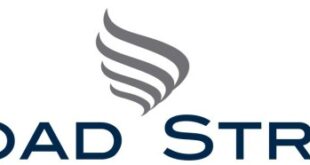Discussions underway on relief for condo owners are heating up as a growing number of owners face financial hardship and uncertainty. The current economic climate, coupled with rising interest rates and property taxes, has put immense pressure on condo owners, many of whom are struggling to make ends meet.
This situation has sparked a wave of concern, leading to calls for government intervention and relief measures to alleviate the burden on condo owners.
The plight of condo owners is a multifaceted issue, encompassing a range of challenges that extend beyond individual financial difficulties. The stability of the condo market itself is at stake, with implications for property values, affordability, and the overall housing landscape.
As discussions on relief measures intensify, stakeholders from various sectors are coming together to assess the situation and propose solutions that could provide a lifeline for condo owners and stabilize the market.
Background of the Issue
Condo owners across the country are facing a multitude of challenges, from rising maintenance costs to declining property values. These challenges are putting significant financial strain on many owners, leading to a growing sense of frustration and uncertainty about the future of their investments.
This situation is not unique, as similar challenges have been faced by condo owners in the past, often stemming from factors like economic downturns, changes in market conditions, and inadequate planning by condo associations.
The Current Situation Facing Condo Owners
The current situation facing condo owners is a complex one, characterized by a number of factors that are contributing to their challenges.
- Rising Maintenance Costs:Condo associations are responsible for maintaining common areas and amenities, such as pools, gyms, and landscaping. The cost of these services has been rising steadily in recent years, driven by factors like inflation, increased demand for skilled labor, and the need for repairs and upgrades to aging infrastructure.
This increase in maintenance costs is often passed on to condo owners in the form of higher monthly fees, putting a strain on their budgets.
- Declining Property Values:In some areas, condo values have been declining, making it more difficult for owners to sell their units if they need to move or downsize. This decline in value can be attributed to factors like oversupply in the market, competition from new construction, and economic conditions that make it harder for people to afford homeownership.
- Inadequate Planning by Condo Associations:In some cases, condo associations have not adequately planned for the future, failing to set aside sufficient funds for maintenance and repairs. This can lead to a situation where the association is forced to make difficult choices, such as raising fees sharply or deferring necessary repairs, both of which can negatively impact condo owners.
Proposed Relief Measures
A number of relief measures have been proposed to address the challenges faced by condo owners. These measures aim to provide financial assistance, improve transparency, and enhance regulatory oversight in the condo sector.
Financial Assistance
Financial assistance measures are designed to help condo owners navigate financial difficulties and avoid foreclosure. These measures can include:
- Loan Forgiveness Programs:These programs offer partial or complete forgiveness of condo loans, reducing the financial burden on owners. For example, a program could forgive a portion of the loan based on the owner’s income level or the condo’s assessed value.
- Tax Credits:Tax credits can provide financial relief by reducing the amount of taxes owed by condo owners. These credits could be targeted towards owners who are facing financial hardship or who are making repairs to their units.
- Grants:Grants are direct payments to condo owners that can be used to cover expenses related to their units, such as repairs or maintenance. Grants can be awarded based on need or on a first-come, first-served basis.
Transparency and Accountability
Transparency and accountability measures are designed to improve communication and build trust between condo owners and their associations.
- Enhanced Disclosure Requirements:Requiring condo associations to disclose more information about their finances, management practices, and reserve funds can help owners make informed decisions. This can include detailed financial statements, meeting minutes, and information about reserve fund balances.
- Independent Audits:Regular independent audits of condo association finances can help ensure that funds are being used appropriately and that there is no financial mismanagement. Audits can also identify potential problems early on, allowing for timely corrective action.
- Condo Owner Education:Providing condo owners with access to information and resources about their rights and responsibilities can empower them to participate more effectively in the management of their buildings. This can include workshops, online resources, and materials that explain condo association rules and regulations.
Regulatory Oversight
Regulatory oversight measures aim to strengthen the oversight of condo associations and prevent future problems.
- Increased Licensing Requirements:Requiring condo association managers to hold licenses and meet specific qualifications can ensure that they have the necessary expertise to manage condo buildings effectively. This can include education, experience, and background checks.
- Strengthened Enforcement Mechanisms:Increasing the penalties for violations of condo association rules and regulations can deter misconduct and encourage compliance. This can include fines, suspension of licenses, or other sanctions.
- Dedicated Condo Ombudsperson:Establishing a dedicated condo ombudsperson can provide a neutral third party to whom condo owners can turn for assistance with disputes or complaints. The ombudsperson can investigate complaints, mediate disputes, and provide advice to condo owners.
Stakeholders Involved

The discussions surrounding relief measures for condo owners involve a diverse range of stakeholders, each with their own perspectives and interests. Understanding their positions is crucial for navigating the complexities of the issue and ensuring that any proposed solutions are equitable and effective.
Stakeholders and Their Perspectives
The key stakeholders involved in these discussions can be broadly categorized as follows:
- Condo Owners:Condo owners are the primary beneficiaries of any relief measures. They are seeking solutions to address financial burdens arising from issues such as rising maintenance costs, special assessments, or property value depreciation. Their primary interest is in protecting their investments and ensuring the long-term sustainability of their living spaces.
- Condo Associations:Condo associations play a crucial role in managing the day-to-day operations of condo buildings and implementing decisions related to maintenance, repairs, and financial matters. Their interests lie in ensuring the financial stability of the association, maintaining the value of the property, and fulfilling their legal obligations to residents.
- Lenders:Lenders, such as banks and mortgage companies, have a vested interest in the financial health of condo buildings. They have provided financing for condo purchases and are concerned about potential defaults or decreases in property value that could impact their loan portfolios.
Their primary interest is in protecting their investments and minimizing losses.
- Government Agencies:Government agencies, including local municipalities and state housing authorities, have a role in regulating condo ownership, providing financial assistance, and ensuring the safety and well-being of residents. Their interests include promoting affordable housing, protecting consumer rights, and ensuring the stability of the housing market.
- Developers:Developers, responsible for building and selling new condo units, are interested in the overall health of the condo market. They seek to create a stable and attractive environment for potential buyers and investors. Their interests include maintaining the value of existing units and encouraging future development.
Impact of Proposed Measures
The potential impact of proposed relief measures on each stakeholder group can be significant and varied:
- Condo Owners:Relief measures, such as financial assistance programs or tax breaks, can provide much-needed support to condo owners facing financial hardship. This could help them avoid foreclosure, maintain their homes, and preserve their investments. However, the effectiveness of these measures will depend on their design and implementation, and any unintended consequences must be carefully considered.
- Condo Associations:Proposed measures could provide financial relief to condo associations struggling to cover rising costs or special assessments. This could help them maintain essential services and avoid financial instability. However, any measures that shift financial burdens from owners to associations could lead to increased maintenance fees or other financial challenges for residents.
- Lenders:Relief measures could help lenders by mitigating the risk of defaults and preserving the value of their loan portfolios. However, any measures that reduce the value of condo properties or make it more difficult for owners to meet their financial obligations could negatively impact lenders’ investments.
- Government Agencies:Relief measures could align with government agencies’ goals of promoting affordable housing and protecting consumer rights. However, any measures that require government funding or create new regulatory burdens could strain government resources or impact other priorities.
- Developers:Relief measures could help developers by maintaining the value of existing condo units and encouraging future development. However, any measures that negatively impact the financial health of condo buildings or create uncertainty in the market could discourage future investment and development.
Potential Challenges and Solutions
Implementing relief measures for condo owners can present a range of challenges, requiring careful consideration and proactive solutions. Addressing these challenges effectively is crucial to ensure the success of the relief program and its positive impact on affected condo owners.
Financial Constraints
Financial constraints pose a significant challenge to implementing relief measures. Providing substantial financial assistance to condo owners requires significant resources, which may be limited, especially in the current economic climate.
- One solution is to explore alternative funding sources, such as public-private partnerships, government grants, or even crowdfunding initiatives. This can help to diversify the funding pool and alleviate the burden on any single entity.
- Another approach is to prioritize the allocation of resources, focusing on the most vulnerable condo owners who are facing the most severe financial hardship. This ensures that the limited funds are directed towards those who need them most.
- Additionally, implementing cost-effective relief measures, such as providing legal aid or financial counseling, can help to maximize the impact of the available resources.
Administrative Complexity
The administrative process of implementing relief measures can be complex and time-consuming. This can involve coordinating with multiple stakeholders, verifying eligibility criteria, and processing applications, all of which can lead to delays and inefficiencies.
- Streamlining the application process by simplifying the required documentation and utilizing online platforms can help to reduce administrative burden. This can make it easier for condo owners to apply and for administrators to process applications.
- Establishing clear and transparent guidelines for eligibility and disbursement of funds can also help to minimize confusion and ensure fairness. This can involve setting up a dedicated website or hotline to provide information and answer questions from condo owners.
- Furthermore, investing in technology and automation can help to expedite the processing of applications and reduce the risk of errors. This can include using artificial intelligence (AI) to automate tasks such as data entry and verification.
Potential for Abuse
There is always a risk of abuse when implementing relief programs. This can involve individuals attempting to exploit the system for personal gain or misrepresenting their circumstances to qualify for assistance.
- Implementing rigorous verification processes, such as background checks and documentation requirements, can help to mitigate the risk of fraud. This can involve collaborating with law enforcement agencies to investigate any suspected cases of abuse.
- Establishing clear penalties for fraud and abuse can also serve as a deterrent. This can include fines, imprisonment, or even the forfeiture of any received benefits.
- Furthermore, promoting transparency and accountability in the administration of the relief program can help to build public trust and discourage fraudulent activities.
Consequences of Not Implementing Relief Measures
Failing to implement relief measures for condo owners can have severe consequences, exacerbating existing problems and potentially leading to further hardship.
- A lack of relief can lead to increased financial strain on condo owners, potentially resulting in foreclosures and displacement. This can have a ripple effect on the broader economy, contributing to housing instability and social unrest.
- It can also erode public confidence in the government’s ability to address pressing issues, leading to further dissatisfaction and political instability. This can hinder future efforts to implement similar relief programs or address other social and economic challenges.
- Furthermore, failing to act can perpetuate existing inequalities and disparities, disproportionately affecting vulnerable populations who are already struggling. This can exacerbate social tensions and hinder efforts to create a more just and equitable society.
Impact on the Housing Market
The proposed relief measures for condo owners could have a significant impact on the housing market, potentially affecting condo prices, availability, and affordability. This section will analyze these potential effects and compare them to other market trends.
Impact on Condo Prices
The relief measures could influence condo prices in several ways. For instance, if the measures make it easier for condo owners to sell their units, this could increase the supply of available condos, potentially leading to a decrease in prices.
Conversely, if the measures make it more attractive to purchase condos, this could increase demand, potentially leading to price increases.
- Increased Supply:If the relief measures make it easier for condo owners to sell their units, such as by providing financial incentives or simplifying the selling process, this could lead to an increase in the supply of available condos. This increased supply could put downward pressure on condo prices as buyers have more options to choose from.
Browse the multiple elements of Kamala Harris rally in Wisconsin, highlights from campaign event at Madison’s Alliant Energy Center: Recap to gain a more broad understanding.
- Increased Demand:Conversely, if the relief measures make it more attractive to purchase condos, such as by providing tax breaks or reducing mortgage rates, this could lead to an increase in demand. This increased demand could put upward pressure on condo prices as buyers compete for a limited number of available units.
Impact on Condo Availability
The relief measures could also affect the availability of condos in the market. For example, if the measures make it easier for condo owners to sell their units, this could increase the number of condos available for purchase. Conversely, if the measures make it more attractive to purchase condos, this could lead to a decrease in the number of available units as more people seek to buy them.
- Increased Availability:If the relief measures make it easier for condo owners to sell their units, this could lead to an increase in the number of condos available for purchase. This could benefit buyers who are looking for a condo, as they would have a wider selection to choose from.
- Decreased Availability:Conversely, if the relief measures make it more attractive to purchase condos, this could lead to a decrease in the number of available units as more people seek to buy them. This could make it more difficult for buyers to find a condo that meets their needs and budget.
Impact on Condo Affordability
The relief measures could have a mixed impact on condo affordability. For example, if the measures lead to a decrease in condo prices, this could make condos more affordable for buyers. However, if the measures lead to an increase in demand, this could drive up prices and make condos less affordable.
- Increased Affordability:If the relief measures lead to a decrease in condo prices, this could make condos more affordable for buyers, particularly those with limited budgets. This could make homeownership more accessible to a wider range of people.
- Decreased Affordability:Conversely, if the relief measures lead to an increase in demand for condos, this could drive up prices and make condos less affordable for buyers. This could exacerbate existing affordability challenges and make it more difficult for people to find a home they can afford.
Comparison to Other Market Trends
The potential impact of the relief measures on the condo market needs to be considered in the context of other market trends. For example, rising interest rates could have a dampening effect on demand for condos, regardless of the relief measures.
Similarly, economic conditions, such as job growth or inflation, could also influence condo prices and availability.
It is important to note that the impact of the relief measures on the condo market will depend on a complex interplay of factors, including the specific details of the measures, the overall state of the economy, and other market trends.
Future Considerations
The success of condo relief measures hinges on various factors and will shape the future of condo ownership and regulation. Understanding these factors is crucial for policymakers and stakeholders to navigate the evolving landscape of condo living.
Potential Future Developments in Condo Ownership and Regulation, Discussions underway on relief for condo owners
The future of condo ownership is likely to be influenced by several key developments, including:
- Growing Demand for Condo Living:As urban populations continue to grow and housing affordability becomes a major concern, demand for condo living is expected to increase. This trend will put pressure on condo developers and regulators to address issues related to affordability, sustainability, and quality of life.
- Technological Advancements:Technology will play a significant role in shaping the condo ownership experience. Smart home technology, virtual reality tours, and online platforms for managing condo associations will become increasingly prevalent, improving efficiency and communication.
- Climate Change and Sustainability:Climate change is prompting a shift towards sustainable building practices and energy-efficient living. Condo buildings will need to adapt to these changes, incorporating green technologies and reducing their environmental impact.
- Changing Demographics:As the population ages and the demand for age-in-place housing grows, condo buildings will need to cater to the needs of older residents. This may involve implementing accessibility features, providing support services, and creating age-friendly communities.
Additional Measures and Strategies
Several additional measures and strategies can be considered to further support condo owners and enhance the condo ownership experience:
- Financial Assistance Programs:Expanding financial assistance programs for condo owners facing financial hardship, such as grants or low-interest loans, could help stabilize condo communities and prevent foreclosures.
- Condo Association Education and Training:Providing educational resources and training programs for condo association boards and managers can improve their understanding of financial management, governance, and legal compliance.
- Incentives for Condo Renovations:Offering tax incentives or grants for condo renovations that improve energy efficiency, accessibility, or safety can enhance the overall quality of condo living.
- Streamlined Condo Conversion Process:Simplifying the process for converting rental buildings into condos can increase the supply of affordable housing options and provide more opportunities for homeownership.
Outcome Summary: Discussions Underway On Relief For Condo Owners
The discussions on relief for condo owners are far from over, and the path forward remains uncertain. However, the urgency of the situation and the growing awareness of the challenges facing condo owners have created a sense of momentum. Finding a balance between supporting struggling owners and maintaining a healthy condo market will be a delicate task.
The outcome of these discussions will have a significant impact on the lives of condo owners and the future of the condo market, shaping the landscape of real estate for years to come.
General Inquiries
What are the main challenges facing condo owners?
Condo owners are facing a variety of challenges, including rising property taxes, increasing interest rates, and difficulty in selling their units due to market conditions. These factors have made it difficult for many owners to make mortgage payments and maintain their properties.
What specific relief measures are being discussed?
Proposed relief measures vary, but some common ideas include tax breaks, mortgage assistance programs, and government-backed refinancing options. The goal is to provide financial relief to struggling owners and make it easier for them to keep their homes.
What are the potential consequences of not implementing relief measures?
Without relief measures, many condo owners could face foreclosure, leading to a surge in vacant units and a further decline in property values. This could have a ripple effect on the broader housing market and economy.
 CentralPoint Latest News
CentralPoint Latest News




